Blog
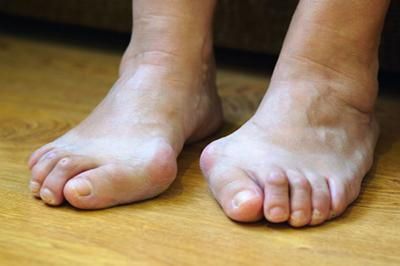
Bunions are a common foot condition that can cause pain, discomfort, and difficulty walking. They occur when the joint at the base of the big toe becomes misaligned, leading to a bony bump on the side of the foot. While bunions can develop due to genetics, improper footwear, or other factors, the good news is that advancements in podiatric care have made treatment and prevention more effective than ever. If you’re struggling with a bunion, seeing a podiatrist can provide relief and help you regain your mobility. New Advances in Bunion Treatment Recent advancements in podiatric care have revolutionized the way bunions are treated. Minimally invasive surgical techniques are now available, offering faster recovery times and less post-operative pain compared to traditional bunion surgery. These procedures involve smaller incisions and precise realignment of the bones, allowing patients to return to their normal activities more quickly. For patients who prefer non-surgical options, custom orthotics have become a key tool in managing bunion symptoms. These specially designed shoe inserts help redistribute pressure on the foot, reduce pain, and slow the progression of the bunion. Advances in orthotic technology have made these devices more comfortable and effective than ever before. Additionally, physical therapy and targeted exercises are increasingly being used to strengthen the muscles and tendons around the big toe joint. These therapies can improve foot alignment and reduce the risk of further joint damage. Combined with proper footwear, these non-invasive treatments can provide significant relief for many patients. Preventing Bunions Before They Start Prevention is always better than treatment, and there are steps you can take to reduce your risk of developing a bunion. Wearing supportive, properly fitting shoes with a wide toe box is one of the most effective ways to protect your feet. Avoiding high heels or shoes that squeeze the toes can also help maintain proper foot alignment. For individuals with a family history of bunions or structural foot issues, regular visits to a podiatrist can make a big difference. A podiatrist can assess your foot mechanics, recommend preventive measures, and provide early intervention if signs of a bunion begin to appear. Take the First Step Toward Relief Bunions don’t have to hold you back. With new advances in treatment and prevention, relief is within reach. Schedule a consultation with a podiatrist today to explore your options and take the first step toward healthier, pain-free feet.

At Delaware Foot and Ankle Group in Newark, DE, we understand that foot pain can significantly impact your daily life. Our dedicated team, including Dr. Anthony Caristo, Dr. Jason Kline, and Dr. Ernest Troisi , is committed to providing comprehensive care for conditions like plantar fasciitis. We aim to educate our patients about this common condition, its causes, symptoms, and effective treatment options available to help you regain your mobility and comfort. Understanding Plantar Fasciitis Plantar fasciitis is a prevalent foot condition characterized by inflammation of the plantar fascia, a thick band of tissue that runs along the bottom of your foot, connecting your heel bone to your toes. This condition often results in sharp heel pain, particularly with the first steps in the morning or after prolonged periods of sitting. Understanding the causes and symptoms of plantar fasciitis is essential for effective management. Causes of Plantar Fasciitis Several factors can contribute to the development of plantar fasciitis. Overuse or repetitive strain on the plantar fascia is a primary cause, often seen in athletes or individuals who engage in high-impact activities. Additionally, certain risk factors can increase your likelihood of developing this condition. For instance, age plays a significant role, as plantar fasciitis is more common in middle-aged individuals. Obesity can also be a contributing factor, as excess weight puts additional stress on the plantar fascia. Furthermore, foot mechanics, such as having flat feet or high arches, can lead to the condition. Occupational factors, including jobs that require prolonged standing or walking on hard surfaces, can further increase the risk. Recognizing the Symptoms The hallmark symptom of plantar fasciitis is heel pain, which may be sharp and stabbing, especially during the first steps after waking up or after sitting for extended periods. Other symptoms may include pain that worsens after activity or at the end of the day, tenderness or swelling in the heel area, and discomfort that improves with movement but returns after rest. If you are experiencing these symptoms, it is essential to seek evaluation and treatment to prevent further complications. Effective Treatment Options At Delaware Foot and Ankle Group , we offer a range of effective treatment options for plantar fasciitis tailored to your individual needs. Initial conservative treatments often include rest and ice to alleviate inflammation and pain. Stretching exercises can improve flexibility in the plantar fascia and calf muscles, while custom-made orthotics provide support and alleviate pressure on the plantar fascia. Physical therapy is another option, where a therapist can guide you through exercises and techniques to strengthen the foot and improve mobility. In cases where conservative treatments do not provide relief, our team may recommend additional options, such as corticosteroid injections or, in rare cases, surgical intervention to release tension on the plantar fascia. Contact Us for Plantar Fasciitis Care If you are suffering from heel pain or suspect you may have plantar fasciitis, we invite you to reach out to us at Delaware Foot and Ankle Group . Our experienced team , led by Dr. Anthony Caristo, Dr. Jason Kline, and Dr. Ernest Troisi , is here to provide the expert care you need. You can visit our website at Delaware Foot and Ankle Group or call us at 302-834-3575 to schedule an appointment. Together, we can help you find relief and get back on your feet.
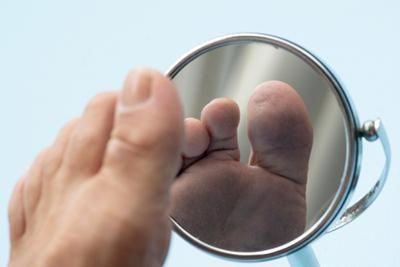
Diabetes can significantly impact foot health, making daily foot care essential to managing the condition. High blood sugar levels can lead to nerve damage (diabetic neuropathy) and poor circulation, increasing the risk of infections, ulcers, and serious complications like amputation. Proper foot care helps prevent these issues and ensures long-term mobility and comfort. Foot care should be a crucial part of your life when you’re dealing with diabetes and can help you avoid serious complications that could occur otherwise. Caring for Your Diabetic Feet Foot care is a simple way to care for your body with diabetes. It’s an important part of diabetic care and only takes a little of your time each day. Incorporating foot care practices into your daily routine and maintaining your overall health is easy. Regularly checking your feet allows you to catch potential problems early. Look for cuts, blisters, swelling, redness, or changes in skin color. Use a mirror or ask a family member for help if you have difficulty seeing the soles of your feet. Even minor injuries can become serious if left untreated. To prevent infections, you should clean your feet daily with warm water and mild soap. Avoid soaking your feet for long periods, as this can dry out the skin. Dry your feet thoroughly, especially between the toes, to reduce the risk of fungal infections. After cleaning your feet, apply a moisturizer to keep the skin soft and prevent cracking, but avoid the areas between the toes to reduce moisture buildup that can lead to infections. Choose shoes that provide good support, fit well, and protect your feet from injuries. Avoid walking barefoot, even at home, as this increases the risk of cuts or punctures. Consider custom orthotics or diabetic shoes for added comfort and protection. Always wear clean, dry socks made of moisture-wicking materials. Cut your toenails straight to avoid ingrown nails, which can lead to infections. Use a nail file to smooth any sharp edges. If you have difficulty trimming your nails or notice abnormalities, consult a podiatrist. Schedule routine foot exams with a podiatrist to detect and address issues early. If you notice any signs of infection, non-healing wounds, or changes in foot structure, seek medical attention immediately. Early intervention can prevent complications and preserve foot health. Contact Our Podiatrist Today Take care of your feet. Contact your podiatrist to learn more about diabetic foot care today .

Custom orthotics can make a real difference in keeping your feet and ankles healthy. They offer targeted support, enhance stability, and help relieve pain tied to conditions like plantar fasciitis, flat feet, or general soreness. By improving mobility and reducing strain on the lower legs, custom orthotics let you stay active and comfortable. The Role of Custom Orthotics Unlike over-the-counter insoles, custom orthotics are designed specifically for your feet. They provide targeted support, correcting structural imbalances and reducing pressure on areas prone to stress. By aligning the feet properly, they help distribute weight evenly, reducing the likelihood of pain in the ankles, knees, hips, and lower back. Benefits of Custom Orthotics for Foot and Ankle Health Custom orthotics give your feet the support they need, which can ease foot fatigue, improve posture, and relieve chronic pain. They’re especially helpful for people dealing with bunions, heel spurs, or arthritis, as they deliver cushioning right where it’s needed most. Athletes and those who spend long hours standing or walking also benefit by lowering their risk of injury and keeping performance on track. Finding the Right Orthotics for Your Needs A podiatrist will look closely at your foot shape and the way you walk to create orthotics that match your specific needs. You might need firm support for better stability or softer cushioning to absorb shock. In either case, custom orthotics are crafted to enhance both how your feet function and how comfortable they feel. If you're experiencing persistent foot or ankle pain, consult a podiatrist to determine if custom orthotics are right for you. Investing in personalized foot support can significantly improve your mobility and overall well-being.

Ingrown toenails can be painful and frustrating, but the good news is that they can be preventable with proper foot care. Take simple steps to reduce your risk and keep your feet healthy and comfortable. What Causes Ingrown Toenails? Ingrown toenails occur when the edge of a toenail grows into the surrounding skin, causing redness, swelling, and discomfort. Some common causes include improper nail trimming, wearing tight shoes, or injury to the toenail. Genetics and certain foot shapes can also contribute. How to Prevent Ingrown Toenails One of the most important steps is trimming your toenails properly. Always cut them straight across and avoid rounding the edges, which can encourage the nail to grow into the skin. Also, do not cut your nails too short, as this can increase the risk. Wearing comfortable, well-fitting shoes is another key factor. Tight or narrow shoes can put unnecessary pressure on your toes, so choose footwear that allows your toes to move freely. Good foot hygiene is also essential. Keeping your feet clean and dry can help prevent infections that worsen ingrown toenails. Regularly washing and drying your feet thoroughly, especially between the toes, can make a big difference. When to See a Podiatrist If you notice persistent pain, swelling, or signs of infection, such as pus or redness spreading beyond the toe, it’s time to see a healthcare professional. Severe or recurring ingrown toenails may require treatment, such as lifting the nail, or minor surgical procedures to remove part of the nail. Healthy Feet, Happy Life Preventing ingrown toenails requires consistent foot care and attention. Proper nail trimming, comfortable shoes, and good hygiene can keep feet healthy and prevent discomfort. If you’re struggling with foot pain or ingrown toenails, don’t hesitate to seek professional advice. Taking care of your feet today can save you from bigger problems.
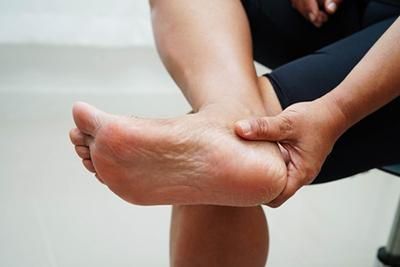
Diabetes can influence many health aspects, but care for one’s feet happens to be one of the most overlooked areas. According to Dr. Anthony Caristo, Dr. Jason Kline, and Dr. Ernest Troisi , the Delaware Foot and Ankle Group in Newark, DE, diabetics are simply at a higher risk for foot complications. These complications include ulcers, infections, and even amputation. That is why proper foot care is essential for diabetics. Diabetic Foot Care Diabetic foot care, which helps reduce serious complication risks, is critical to managing diabetes because proactively protecting your feet prevents pain/discomfort and helps maintain the quality of life you seek. Diabetes can lead to two major issues affecting foot health. These issues can turn minor injuries into serious complications if not addressed promptly. Neuropathy (a.k.a., nerve damage) reduces foot sensation, making it more challenging to recognize cuts or injuries to the feet. Poor circulation simply causes you to heal slower than expected, which elevates the risk of infection. In addition, diabetes can cause skin dryness and cracking, which creates entry points for bacteria. Common Diabetic Foot Complications Diabetic foot care helps prevent: Cuts or blisters that can quickly become infected due to slower healing. Severe infections can lead to tissue damage or amputation. Open sores may arise from friction, pressure points, or simply from injuries not detected. Without treatment, a risk of infection may even lead to surgery. Uncontrolled infections or severe circulation issues can result in the need for amputation to save a patient’s life. Charcot Foot, with its weakened foot bones, refers to a medical condition in which these bones may fracture or dislocate, causing a deformity. Preventive Measures for Diabetic Foot Care As most diabetics know, washing feet daily with warm water and mild soap is critical. Be sure to dry your feet completely. Don’t forget to dry between the toes. Use moisturizers to prevent cracking. Other suggestions include: Check each foot daily for cuts/swelling/blisters/redness or other abnormalities. Ask for help if you need it. Avoid walking barefoot, even indoors. Cut toenails straight, as this is the best way to prevent ingrown toenails. Seek professional help if you need it. Wear comfortable shoes that fit well, as they protect your feet. Maintain stable blood sugar helps improve circulation/reduce complications. Schedule routine check-ups with a specialist of Delaware Foot and Ankle Group to monitor foot health and address any issues early. For more information about our diabetic foot care options, contact Dr. Caristo, Dr. Kline and Dr. Troisi , and the Delaware Foot and Ankle Group in Newark, DE, at 302-834-3575 or online .
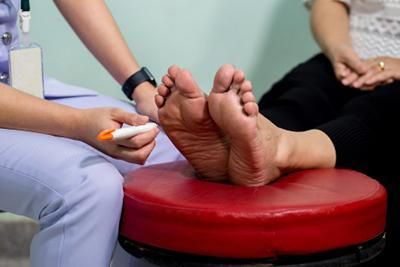
Diabetes can influence many health aspects, but care for one’s feet happens to be one of the most overlooked areas. According to Dr. Anthony Caristo, Dr. Jason Kline and Dr. Ernest Toisi, the Delaware Foot and Ankle Group in Newark, DE, diabetics are simply at a higher risk for foot complications. These complications include ulcers, infections, and even amputation. That is why proper foot care is essential for diabetics. Diabetic Foot Care Diabetic foot care, which helps reduce serious complication risks, is critical to managing diabetes because proactively protecting your feet prevents pain/discomfort and helps maintain the quality of life you seek. Diabetes can lead to two major issues affecting foot health. These issues can turn minor injuries into serious complications if not addressed promptly. Neuropathy (a.k.a., nerve damage) reduces foot sensation, making it more challenging to recognize cuts or injuries to the feet. Poor circulation simply causes you to heal slower than expected, which elevates the risk of infection. In addition, diabetes can cause skin dryness and cracking, which creates entry points for bacteria. Common Diabetic Foot Complications Diabetic foot care helps prevent: Cuts or blisters that can quickly become infected due to slower healing. Severe infections can lead to tissue damage or amputation. Open sores may arise from friction, pressure points, or simply from injuries not detected. Without treatment, a risk of infection may even lead to surgery. Uncontrolled infections or severe circulation issues can result in the need for amputation to save a patient’s life. Charcot Foot, with its weakened foot bones, refers to a medical condition in which these bones may fracture or dislocate, causing a deformity. Preventive Measures for Diabetic Foot Care As most diabetics know, washing feet daily with warm water and mild soap is critical. Be sure to dry your feet completely. Don’t forget to dry between the toes. Use moisturizers to prevent cracking. Other suggestions include: Check each foot daily for cuts/swelling/blisters/redness or other abnormalities. Ask for help if you need it. Avoid walking barefoot, even indoors. Cut toenails straight, as this is the best way to prevent ingrown toenails. Seek professional help if you need it. Wear comfortable shoes that fit well, as they protect your feet. Maintain stable blood sugar helps improve circulation/reduce complications. Schedule routine check-ups with a specialist of Delaware Foot and Ankle Group to monitor foot health and address any issues early. For more information about our diabetic foot care options, contact Dr. Toisi, Dr. Kline, and Dr. Caristo of the Delaware Foot and Ankle Group in Newark, DE, at 302-834-3575 or online .

Foot health plays a crucial yet often overlooked role in overall body alignment and can significantly impact other areas of your body. The feet serve as the foundation of the body, and when something goes wrong, whether it’s flat feet, high arches, or improper footwear, it can throw off your body’s alignment, leading to pain in the knees, hips, and lower back. Understanding the underlying cause of your back pain and how it may be related to issues in your feet is important. Understanding How Foot Problems Lead to Back Pain Dealing with different foot issues can impact other areas of your body and cause further complications like back pain. The alignment of your feet directly impacts your posture and how your body moves. If your feet are not properly aligned, it can throw off the body’s entire kinetic chain, leading to improper posture and inefficient movement patterns. Misaligned feet can cause the pelvis to tilt, creating uneven weight distribution and placing extra stress on the lower back. Foot problems often cause people to change their walking patterns or posture to reduce discomfort. These compensatory movements can lead to muscle imbalances, tension, and pain in the back. Fortunately, addressing foot health issues can alleviate or even prevent back pain. Orthotics are specially designed shoe inserts that support your feet, correcting issues like flat feet, high arches, and overpronation. By improving foot alignment, orthotics can help reduce strain on the spine and prevent back pain. Wearing shoes with good arch support, cushioning, and stability is essential for maintaining healthy feet and reducing back pain. Avoid high heels and shoes with inadequate support. Regular foot, ankle, and leg exercises can improve muscle strength and flexibility, promoting better posture and reducing the risk of back pain. Stretching the calves, Achilles tendon, and lower back can help relieve tension caused by foot misalignment. Contact Our Podiatrist Today Ensure you understand how your foot problems can affect pain in other areas of your body. Contact your podiatrist to schedule your appointment today .

Heel pain is a common issue affecting people of all ages, often disrupting daily activities and quality of life. It typically arises from repetitive strain, poor footwear, sudden trauma, or underlying conditions such as plantar fasciitis or Achilles tendonitis. Athletes, people with flat feet or high arches, and those who stand for long hours are particularly susceptible. Understanding the nature of the pain is essential for effective treatment. Acute heel pain occurs suddenly, often due to an injury like a sprain, bruise, or overuse after intense physical activity. This pain is sharp and localized, and while it may subside with rest, it can limit mobility in the short term. Chronic heel pain, in contrast, develops gradually over weeks or months. It often stems from heel spurs, plantar fasciitis, or arthritis. Chronic pain may feel dull and persistent and worsen after long periods of standing or inactivity. A podiatrist specializes in diagnosing and treating heel pain. They perform a thorough evaluation to identify the underlying cause and create a personalized treatment plan. Treatment may include custom orthotics, physical therapy, anti-inflammatory medications, or lifestyle modifications such as improved footwear. A podiatrist may suggest advanced treatments like corticosteroid injections or minimally invasive procedures for severe cases. How to Alleviate Heel Pain with Home Remedies Heel pain, whether caused by plantar fasciitis, overuse, or minor injury, can often be relieved with simple home remedies. Addressing this discomfort can help you stay active and prevent further complications. Rest is essential when standing or walking for extended periods, such as during a long shift at work or after a weekend hike. Elevate your foot and apply an ice pack wrapped in a towel for 15-20 minutes, repeating every few hours to reduce inflammation. Ice can be particularly effective after strenuous activity. Stretching is another powerful tool. After waking or sitting for prolonged periods, try calf stretches or rolling the arch of your foot over a frozen water bottle. These movements can loosen tight muscles and improve blood flow. Supportive footwear can make a significant difference. Switch to cushioned, well-fitted options if you’ve been wearing unsupportive shoes, such as flats or flip-flops. Use gel heel inserts to reduce pressure and provide comfort for immediate relief. Pain persisting after sports or exercise might benefit from Epsom salt soaks. Dissolve a cup of Epsom salt in warm water and soak your feet for 15-20 minutes to relax muscles and reduce soreness. In cases where pain continues despite these efforts, consider consulting a healthcare provider to explore additional treatment options and prevent long-term issues. What Your Podiatrist Can Do for Persistent Heel Pain A podiatrist treats heel pain by diagnosing the cause, such as plantar fasciitis or heel spurs, through physical exams, imaging, and medical history. Treatments may include custom orthotics, physical therapy, medications, or minimally invasive procedures. During your consultation, expect personalized care, a treatment plan, and advice on preventing future discomfort. Please explore our website to learn about the conditions we treat and the services provided .

Heel pain is a common discomfort that affects many people, and it can range from a mild irritation to a severe hindrance to daily activities. Whether from standing for long hours, high-impact exercise, or conditions like plantar fasciitis, heel pain can be frustrating. While professional medical treatment may be necessary for more serious or persistent cases, many people find relief with simple home remedies. Treating Heel Pain at Home When you’re dealing with heel pain, it can be difficult to function normally, and you might find yourself struggling to find relief. You must know how to treat your heel pain at home and how lifestyle changes can give you the relief you’re looking for! The first step in managing heel pain at home is to rest and avoid activities that exacerbate the pain, such as running or standing for long periods. You can reduce inflammation and prevent further injury by giving your feet time to heal. Opt for low-impact exercises like swimming or cycling if you need to stay active without straining your heel. Icing the affected area can significantly reduce inflammation and numb the pain. Apply an ice pack or a frozen water bottle to the heel for 15-20 minutes several times a day, especially after activities that cause pain. Be sure to wrap the ice in a cloth to avoid direct contact with the skin, which could cause frostbite. Regular stretching can help alleviate tension in the muscles and tissues surrounding the heel, particularly for conditions like plantar fasciitis and Achilles tendinitis. These stretches help release tension in the calf muscles and plantar fascia, contributing to heel pain. Similarly, it’s important to perform exercises to strengthen the muscles and give your feet the support they need. Massaging the affected heel can help relieve pain and reduce muscle tension. Massaging the bottom of the foot, particularly the arch and heel, can improve blood circulation and relax tight muscles. You can use your fingers or a massage ball to apply gentle pressure. If your pain is severe, you can talk to your podiatrist about over-the-counter pain relievers. Contact Your Podiatrist Today Find out how you can ease your heel pain at home! Contact your podiatrist to learn more today .

Ingrown toenails are a common and often painful condition that can affect anyone, regardless of age. When the edge of a toenail grows into the surrounding skin, it can cause inflammation, pain, and even infection. You must never ignore this pain, as it can lead to infection. When infection sets in, it can be difficult to deal with, leading to future complications. It’s important to immediately seek help for your ingrown toenails and find relief for your pain. Dealing With Painful Ingrown Toenails It can be easy to ignore when dealing with ingrown toenails. When ingrown toenails start to cause pain, it can interfere with your daily activities and make it hard to perform your normal movements. You must seek out help from your podiatrist to avoid complications and get the care that you need as soon as possible. Common symptoms of ingrown toenails include: Pain and tenderness Redness and swelling Thickened skin Discharge or pus When dealing with an ingrown toenail, your podiatrist will often recommend methods you can perform at home. Soaking your foot in warm, soapy water for 15-20 minutes daily can help reduce swelling and pain. Adding Epsom salt can also provide relief. After soaking, gently place a small piece of cotton or dental floss between the nail and the skin to encourage the nail to grow away from the skin. Be careful not to force it, as this can cause further irritation. If you’re experiencing significant pain or discomfort, over-the-counter pain relievers such as ibuprofen or acetaminophen can help alleviate symptoms. If home remedies do not improve your condition or if you suspect an infection, it’s important to see your podiatrist for further care. They may provide antibiotics or suggest surgery to remove part of the nail or the entire nail. Contact Our Podiatrist Today Don’t ignore your pain! Contact your podiatrist to learn more about dealing with ingrown toenails and schedule your appointment today .
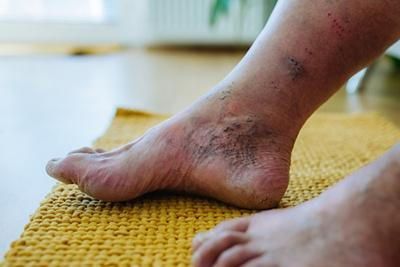
Diabetes is a chronic condition that occurs when the body either cannot produce enough insulin or is unable to use the insulin it makes. Insulin is essential for helping the body convert food into energy. Without it, blood sugar levels can rise to unhealthy levels. There are two main types of diabetes: Type 1, where the body doesn’t produce insulin, and Type 2, where the body becomes resistant to insulin or doesn’t produce enough. Both children and adults can develop diabetes. In children, Type 1 diabetes is more common, and symptoms can include increased thirst, frequent urination, and unexpected weight loss. Type 2 diabetes, once considered an adult condition, is now also seen in children, often linked to obesity and lifestyle factors. For adults, Type 2 is more common and may develop slowly, with symptoms that are harder to notice until more severe issues arise, such as nerve damage or heart disease. People with diabetes are at higher risk for foot problems due to poor circulation and nerve damage. The condition makes regular visits to a podiatrist crucial. A podiatrist can help prevent complications like infections, ulcers, and even amputations by monitoring foot health, providing treatments, and recommending proper foot care. If you notice any changes in foot sensation, cuts, or sores that don’t heal, consult a podiatrist. Regular foot check-ups can help catch issues early. Best Foot Care Practices for Diabetics Foot care is crucial for patients with diabetes, as high blood sugar can lead to nerve damage and poor circulation, increasing the risk of foot problems. Here are some essential dos and don’ts to keep your feet healthy: Do: Inspect your feet daily. Check for cuts, blisters, redness, or swelling. Early detection can prevent complications. Wash your feet gently. Use lukewarm water and mild soap. Avoid hot water, as it can damage sensitive skin. Trim your nails carefully. Cut your nails straight across to avoid ingrown nails. If you can’t reach your feet, ask your podiatrist to help. See a podiatrist regularly. A specialist can spot problems before they become dangerous and offer guidance on proper care. Don’t: Ignore wounds or blisters. Even minor cuts can become serious if not treated promptly. Clean them properly and seek medical help if they don’t heal. Walk barefoot, even indoors. You risk stepping on sharp objects that can cause injury. Soak your feet. Soaking can dry out your skin and increase the risk of infection. Use heating pads or hot water bottles. Without proper sensation, you may burn your feet unknowingly. Explore Expert Podiatry Solutions for Diabetic Foot Care If you experience persistent foot pain, numbness, infections, or slow-healing wounds, explore expert podiatry solutions for diabetic foot care. Early intervention by a podiatrist helps prevent complications like ulcers or amputations, ensuring optimal foot health management and improving the quality of life for individuals with diabetes. Please explore our website to learn about the conditions we treat and the services provided .

